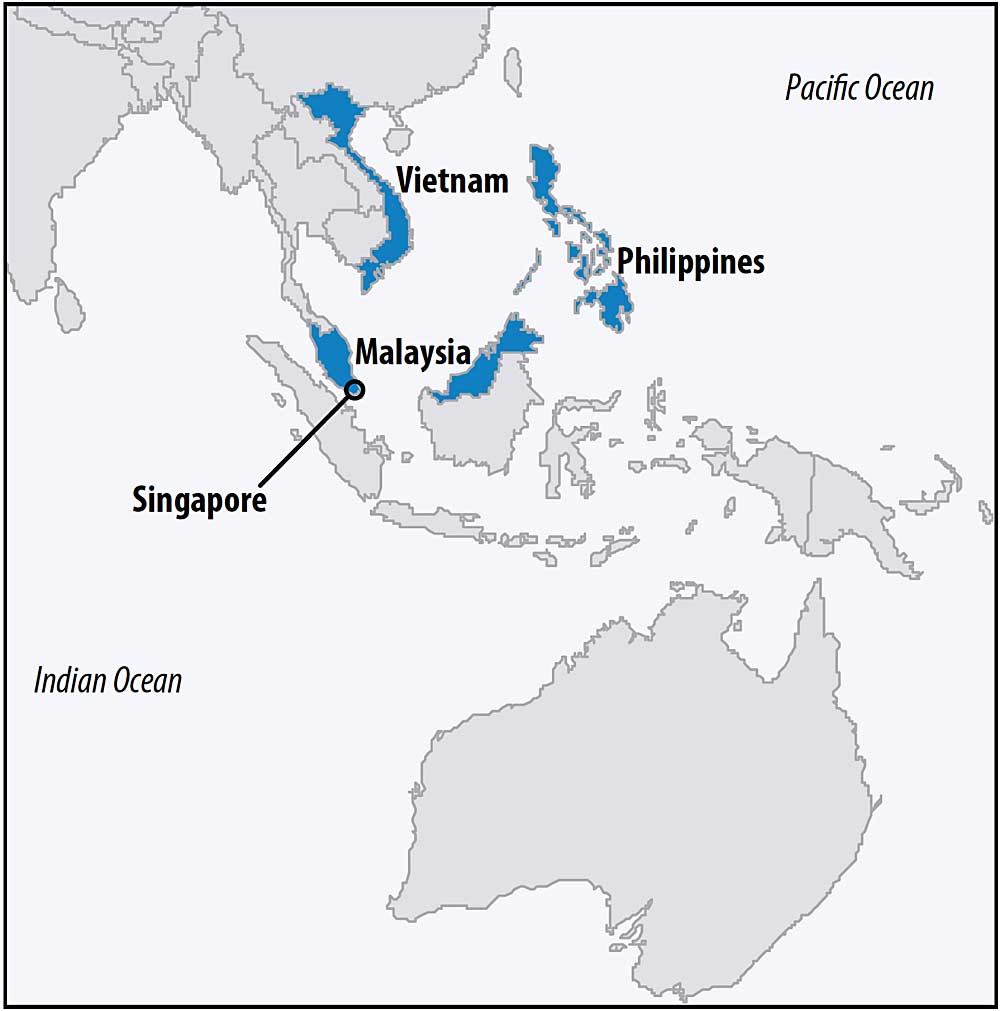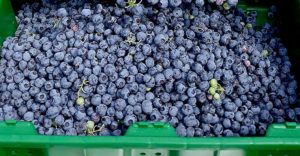Blueberry growers in Washington and Oregon have teamed up to develop export markets in four Southeast Asian countries, using a mixture of grower assessments and federal grant funding.
The nation’s two largest blueberry production states hope to capitalize on the inroads and name recognition cultivated by other signature Northwest fruits, such as apples and cherries.
“We’re kind of coming in on their coattails,” said Alan Schreiber, executive director of the Washington Blueberry Commission.
Like those other fruits, production volume continues to rise, and industry leaders are looking for more places to sell it.
If all goes as planned, the two states will spend a combined $840,000 over the next three years to build markets in Vietnam, the Philippines, Singapore and Malaysia.

Both Washington and Oregon are recognizable names in Asia, said Bryan Ostlund, executive director of the Oregon Blueberry Commission. Washington is the largest producer in the U.S., but Oregon has the largest volume of fresh berries and is the largest exporter. Since 2011, it has been the only state allowed to export to Korea, for example.
The United States has recently earned access for blueberries in the four Southeast Asian countries, all with significant wealth in the middle class and a sophisticated distribution infrastructure with cold storage.
The commissions began courting Southeast Asia in 2014, Ostlund said. Five years later, in 2019, Oregon shipped its first 1.5 million pounds to Vietnam, just a fraction of the 153 million-pound harvest that year.
Now that they have access, the commissions will shift to promotion, working with chefs on recipes, holding in-store promotions and blasting social media.
Exports and imports
The moves to boost exports have come at the same time the U.S. blueberry industry has challenged rising imports from Latin American countries with lower production costs. Last year, producers in several states asked the U.S. government to protect domestic producers from imports, which increased by 62 percent between 2015 and 2019.
In February, the U.S. International Trade Commission ruled against them, deciding that increasing imports of blueberries from Mexico, Peru, Chile and other countries neither threatened nor caused serious injury to domestic growers. In fact, the domestic industry profited and succeeded overall during that time period, according to a trade commission report released in late March: “Although the domestic industry’s profitability trended downward in certain years, it remained reasonably profitable throughout the period of investigation and experienced increases in acreage, production, employment (workers and wages), productivity and shipments, and it continued to make investments, which contributed to this growth.”
But the request itself made waves inside and outside the industry. The blueberry commissions in nearly all production states supported the effort. Fresh imports from those Latin American countries directly compete with U.S. growers in the Southeast, while the rest of the country is affected by the imported fruit’s influence on prices for processed blueberries, especially frozen. Meanwhile, those Latin American producers are making their way to Asian consumers — who also want blueberries year-round.
“It’s the whole, very dynamic, crazy jigsaw puzzle of things that you’ve got to consider,” Ostlund said.
Other industry members worried that pushing back on imports could trigger retaliatory tariffs. The Blueberry Coalition for Progress and Health, a group of domestic and international retailers and producers, including Driscoll’s and California Giant Berry Farms, both importers, formed specifically to oppose the measure.
Agricultural groups outside the berry industry lined up on both sides of the fence. The Northwest Horticultural Council, which represents Pacific Northwest pear, apple and cherry producers in international trade policy, didn’t take a side, but President Mark Powers urged caution. The tit for tat of international trade policy moves at an unprecedented pace these days, he said. It doesn’t take long for a move in one product to inspire payback on another product. Apples are often that other product.
“Unfortunately, in many countries, we’re seeing apples are a target of retaliation because they know it hurts our growers,” he said.
Schreiber, of the Washington Blueberry Commission, considers the blueberry export and import situations different. Washington and Oregon want to sell blueberries to countries that don’t produce any of their own, while Peru, Mexico and Chile are cutting into the market of the largest blueberry-producing nation in the world, the United States, he said. Blueberries, he added, are native to North America.
“I think there’s a fundamental difference,” he said. •
—by Ross Courtney








Leave A Comment